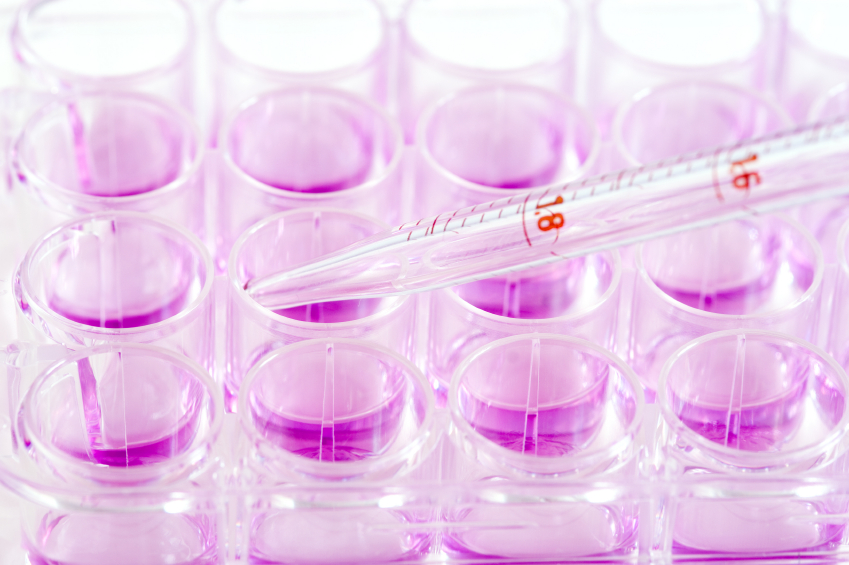One of the forums of the Estates General on Bioethics dealt with the research on the embryo, against the backdrop of this question: has the law of 2004 to be kept as it is? The law of 2004 bans the research on embryo but authorises it by derogation for two conditions: the requirement of major therapeutic advances and the absence of alternative method of comparable effectiveness. However, the revolutionary possibilities proposed by the reprogrammed adult stem cells (iPS) by Pr. Yamanaka in 2007, were not included in the discussions. How to explain this silence about a discovery, which fundamentally challenges the derogations to the prohibition of research on embryo in France? Do iPS cells make obsolete the use of embryonic cells (hESC) and the cloning, for the continuity of a therapy? Today let’s answer this question.
iPS /hESC: same characteristics1
IPS cells, which were genetically reprogrammed and became pluripotent, are equal to human embryonic cells. Morphologically speaking they have the same qualities of self-renewal and proliferation, the specific surface antigens, the expression of genes, the epigenetic status of pluripotent cells (chromatin) and finally the specific markers. In vitro, they are capable of maintaining their self-renewal and of giving cells of the 3 embryonic germ layers and in vivo, they react in the same way as those of hESC: they form teratomas.
Some researchers mention the oncogenic risk of iPS cells however the problem of the c-Myc transgene which is oncogenic was resolved only a few weeks after the 2007 discovery: from now on, we use a new gene, n-Myc, which is not carcinogenic. Also Yamanaka was blamed for using viral vectors to obtain its reprogramming: since then an identical reprogramming could be obtained without resorting to retroviral vector. Moreover, the cells thus obtained are not directly injected in the patient but cell lines are created from iPS cells which do not express anymore the action of viral vector. Finally regarding the resistance to antibiotics, we remind that the use of antibiotic-resistant gene is not anymore necessary, from now on we can isolate iPS cells according to their mere morphological criteria.
iPS superior to hESC
The iPS cells are identical to patients thus there is no immunologic rejection because they have the advantage to be obtained from cells directly sampled from the patient. For therapeutic applications, it is a major advantage because the grafts will not present immunocompatibility problems. On the contrary, hESC cells cause a systematic immunologic rejection in the recipient organism. No solutions were found, except an immunosuppressive therapy identical to that implemented in the organ transplantations. “As the iPS cells are obtained from patient’s cells, they would not have the risk to be rejected by the immune system and would not need to take a lifetime immunosuppressive therapy” declared Anne-Lise Bennaceur-Griscelli2, Professor of Haematology at the University of Paris-Sud 11 / Inserm Unit 602.
They allow modelling pathologies: professor Yamanaka cites the generation of models of “in vitro” diseases as the first practical application coming from this technology.
The iPS cells avoid using cloning, a technique which is not controlled. Before discovering iPS, some researchers attempted to derive embryonic stem cells from an embryo obtained by cloning the patient. But nobody achieved it (human cloning does not work) whereas Yamanaka’s method allows to obtain dedifferentiated cells directly from the patient, without cloning: more efficient, safer (because not only the cloning did not work but also we did not know the side effects on the cell development) and thus quicker.
Some people say that iPS cells could not have been obtained without using human embryos. However S. Yamanaka’s study of 25th August 2006 was based on mouse embryos (and not human) and to the contrary his works showed that the step of researches on human embryos was not necessary.
A revolution
iPS cells revolution what we thought impossible in matter of molecular biology (to rejuvenate cells) and a lot of obstacles inherent to the technique could have been removed. Today, already 200 laboratories in the world work on these cells whereas this discovery was made only 2 years ago and various teams which work on human embryos abandoned them to dedicate to iPS cells. On 2nd June 2009 Japanese government decided to allocate more than €40 million to the research on iPS cells.
Ian Wilmut, from the University of Edinburg and “father” of Dolly, the cloned sheep, declared, just after S. Yamanaka’s discovery, that he abandoned cloning. On 18th May 2009 he confirmed his words in Gènéthique (see interview on www.genethique.org): “Before discovering iPS cells, we attempted to derive embryonic stem cells produced by the transfer of a cell nucleus of the patient suffering a hereditary disease. At this point, nobody achieved it. But now, the de-differentiation of murine somatic cells (Pr. Yamanaka’s method) showed that the same objective could be achieved using directly the somatic cells of the patients. There is a major therapeutic advantage with iPS cells: they are genetically identical to the patient, allowing modelling pathologies and researching rapidly drugs to treat the disease symptoms upstream. (…) Cloning technique is not anymore the current technique. If the science offers quicker, more interesting and efficient ways, I agree to follow them.”
To have the complete study and see the scientific references, see the IPS folder on www.genethique.org
1- Ces caractéristiques sont décrites dans la publication K. Takahashi, K. Tanabe and al., Induction of pluripotent stem cells from adult human fibroblasts by defined factors, Cell, 2007, 131 : 861-872 – J. Thomson and al., Induced pluripotent stem cells lines derived from human somatic cells, Science, 2007, 318 : 1917-1920.
2 – La Recherche N°426 – 01/2009 – PALMARÈS 2008, “Les promesses des cellules iPS”, Sophie Coisne
2 – La Recherche N°426 – 01/2009 – PALMARÈS 2008, “Les promesses des cellules iPS”, Sophie Coisne

